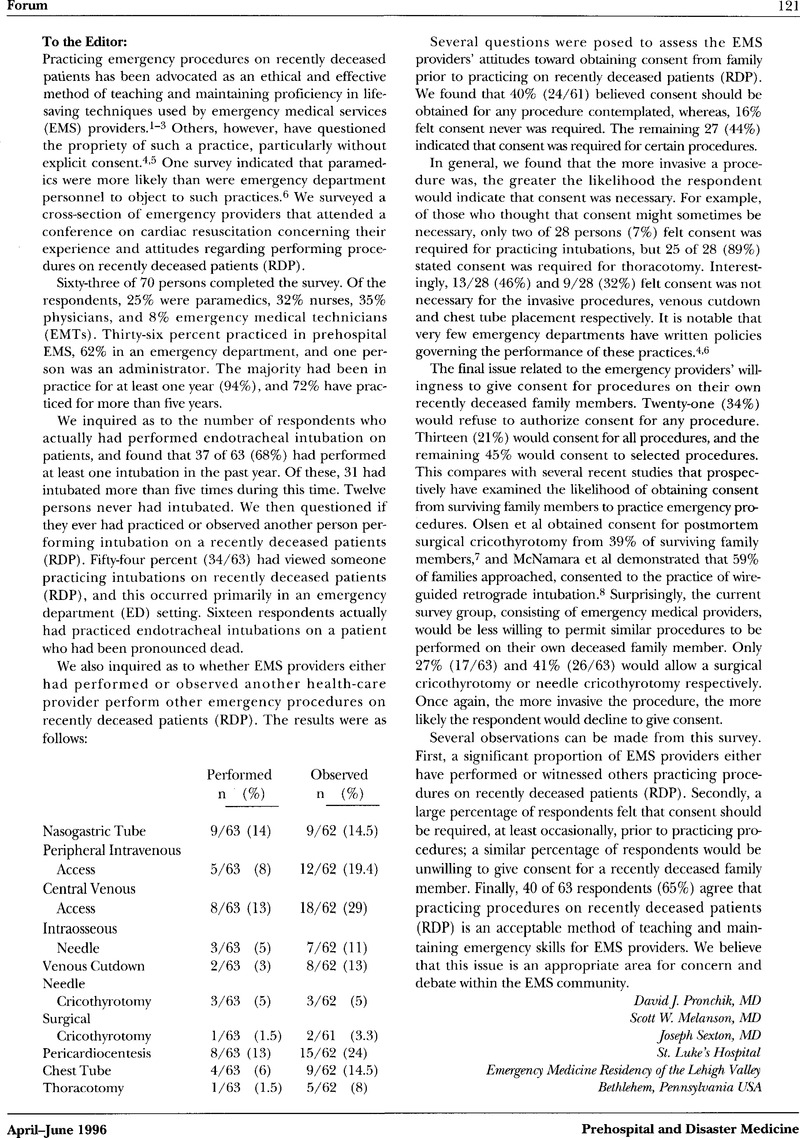No CrossRef data available.
Article contents
To the Editor
Published online by Cambridge University Press: 17 February 2017
Abstract
An abstract is not available for this content so a preview has been provided. As you have access to this content, a full PDF is available via the ‘Save PDF’ action button.

- Type
- Forum
- Information
- Copyright
- Copyright © World Association for Disaster and Emergency Medicine 1996
References
1. Iserson, KV: Law versus life: The ethical imperative to practice and teach using the newly dead emergency department patient. Ann Emmerg Med 1995;25:91–94.CrossRefGoogle ScholarPubMed
2. Brattebo, G, Wisbor, T, Oyen, N: Correspondence, Using newly decreased patients in teaching procedures. N Engl J Med 1995;332:1445.Google Scholar
3. Iserson, KV: Correspondence, Using newly deceased patients in teaching procedures. N Engl J Med 1995;332:1445–1446.Google ScholarPubMed
4. Burns, JP, Reardon, FE, Truog, RD: Using newly deceased patients to teach resuscitation procedures. N Engl J Med 1994;331:1652–1655.CrossRefGoogle ScholarPubMed
5. Goldblatt, AD: Don't ask, don't tell: Practicing minimally invasive resuscitation techniques on the newly dead. Ann Emerg Med 1995;25:86–90.CrossRefGoogle ScholarPubMed
6. Morhaim, DK, Heller, MB: The practice of teaching endotracheal intubation on recently deceased patients. J Emerg Med 1991;9:515–518.CrossRefGoogle ScholarPubMed
7. Olsen, J, Spilger, S, Windisch, T: Feasibility of obtaining family consent for teaching cricothyrotomy on the newly dead in the emergency department. Ann Emerg Med 1995;25:660–665.CrossRefGoogle ScholarPubMed
8. McNamara, RM, Monti, S, Kelly, JJ: Requesting consent for an invasive procedure in newly deceased adults. JAMA 1995;273:310–312.CrossRefGoogle ScholarPubMed


